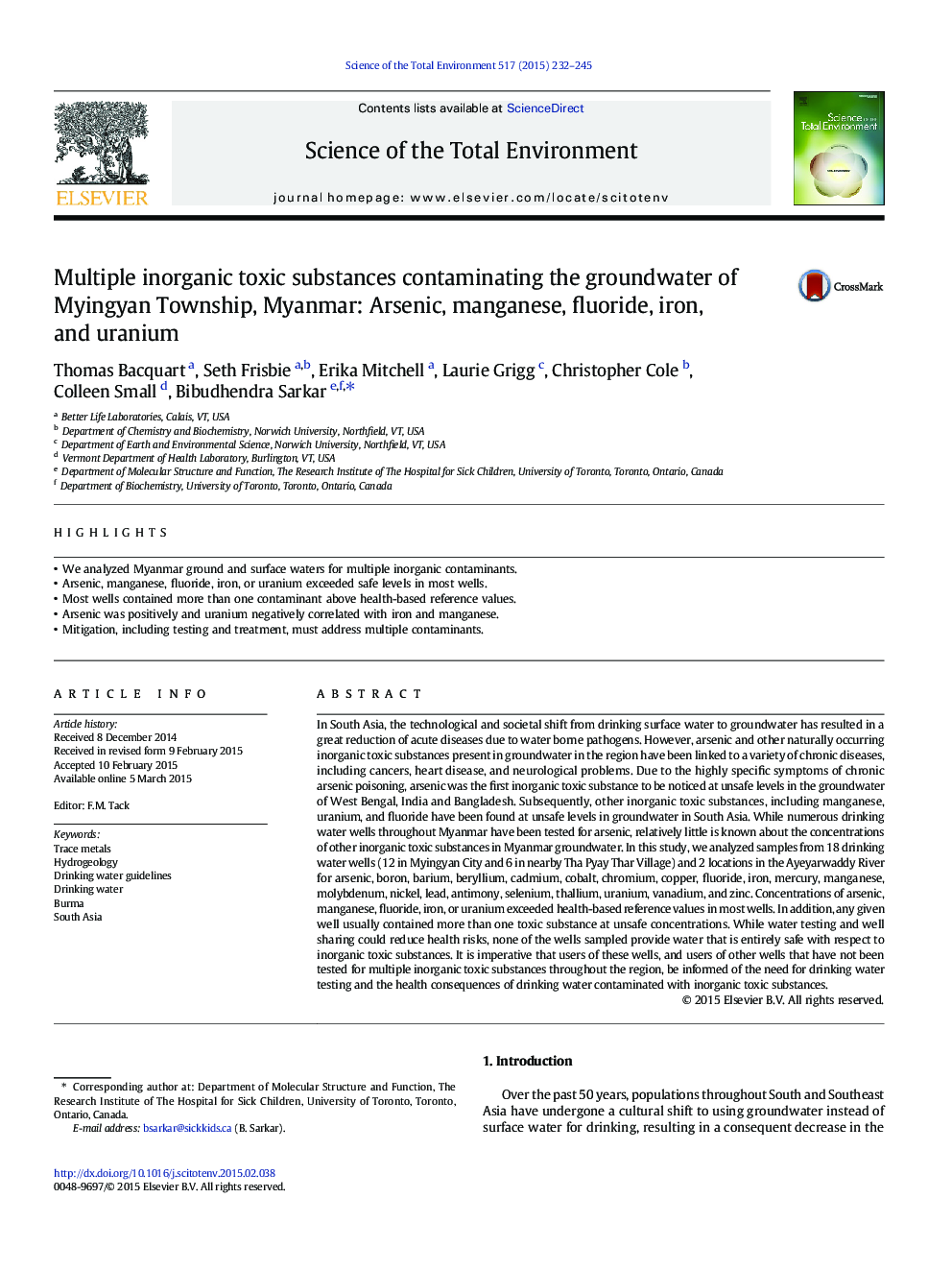| کد مقاله | کد نشریه | سال انتشار | مقاله انگلیسی | نسخه تمام متن |
|---|---|---|---|---|
| 4428437 | 1619762 | 2015 | 14 صفحه PDF | دانلود رایگان |
• We analyzed Myanmar ground and surface waters for multiple inorganic contaminants.
• Arsenic, manganese, fluoride, iron, or uranium exceeded safe levels in most wells.
• Most wells contained more than one contaminant above health-based reference values.
• Arsenic was positively and uranium negatively correlated with iron and manganese.
• Mitigation, including testing and treatment, must address multiple contaminants.
In South Asia, the technological and societal shift from drinking surface water to groundwater has resulted in a great reduction of acute diseases due to water borne pathogens. However, arsenic and other naturally occurring inorganic toxic substances present in groundwater in the region have been linked to a variety of chronic diseases, including cancers, heart disease, and neurological problems. Due to the highly specific symptoms of chronic arsenic poisoning, arsenic was the first inorganic toxic substance to be noticed at unsafe levels in the groundwater of West Bengal, India and Bangladesh. Subsequently, other inorganic toxic substances, including manganese, uranium, and fluoride have been found at unsafe levels in groundwater in South Asia. While numerous drinking water wells throughout Myanmar have been tested for arsenic, relatively little is known about the concentrations of other inorganic toxic substances in Myanmar groundwater. In this study, we analyzed samples from 18 drinking water wells (12 in Myingyan City and 6 in nearby Tha Pyay Thar Village) and 2 locations in the Ayeyarwaddy River for arsenic, boron, barium, beryllium, cadmium, cobalt, chromium, copper, fluoride, iron, mercury, manganese, molybdenum, nickel, lead, antimony, selenium, thallium, uranium, vanadium, and zinc. Concentrations of arsenic, manganese, fluoride, iron, or uranium exceeded health-based reference values in most wells. In addition, any given well usually contained more than one toxic substance at unsafe concentrations. While water testing and well sharing could reduce health risks, none of the wells sampled provide water that is entirely safe with respect to inorganic toxic substances. It is imperative that users of these wells, and users of other wells that have not been tested for multiple inorganic toxic substances throughout the region, be informed of the need for drinking water testing and the health consequences of drinking water contaminated with inorganic toxic substances.
Journal: Science of The Total Environment - Volume 517, 1 June 2015, Pages 232–245
